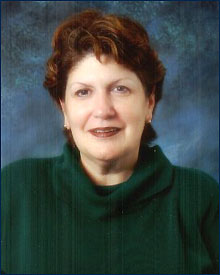Clinical Trial Provides Promising New Treatment for Waldenström's Patient

Ellen Kaner Bresnick is used to doing her homework. A veteran English teacher of 36 years, she wasted no time researching everything she could find on the Internet when she was first diagnosed with a rare blood cancer.
"I'd been getting sick a lot, more than the usual stuff you pick up from kids in the classroom. When I finally saw a rheumatologist and was found to have abnormal blood proteins, I went to the Internet immediately to learn all I could," she says.
Her research led her to Dana Farber Cancer Institute in her hometown of Boston, where she underwent blood tests and several bone marrow biopsies. There she was diagnosed with Waldenström's Macroglobulinemia (WM), a relatively rare B-cell lymphoma that affects nearly 6,000 Americans each year.
The first description of Waldenström’s Macroglobulinemia was by Dr. Jan Waldenström in 1944. More than 50 years later, only minimal progress has been made on finding the cause and treatment of the disease. In 1999, with the help of patients, clinical and basic science investigators, the Dana Farber Cancer Institute organized an international WM research program. Today, over 20 centers in the U.S., Canada, Western Europe and Australia belong to the WM Clinical Trials Group (WMCTG), which provides new treatments for patients worldwide.
Once diagnosed, Bresnick needed to receive treatment closer to her home in Potomac, Maryland. Fortunately for her, there was a WM expert right in her own backyard at the University of Maryland Marlene and Stewart Greenebaum Comprehensive Cancer Center (UMGCCC). Her doctor at Dana-Farber (Dr. Irene Ghobrial) referred her to Dr. Ashraf Badros, a member of the Hematologic Malignancies Program at Maryland and a member of WMCTG since 2003. An expert in WM, Dr. Badros has initiated five clinical trials for WM patients. Bresnick met with him and agreed to enroll in a trial testing a new WM treatment.
With the help of Sunita Philip, clinical research coordinator for the research study, Bresnick completed the paperwork, underwent the required testing and was found to be eligible for the trial. She began the experimental treatment, which consisted of six months of weekly infusions of two chemotherapy drugs, Rituxan and Bortezomib.
Her side effects were relatively mild: some nausea (for which she was given anti-nausea medication), some sleeplessness and difficulty concentrating. She was fortunate to have her husband Bill at her side for each appointment, taking notes and acting as a second pair of ears to help keep track of instructions and advice from the medical team.
"Mrs. Bresnick was a very motivated patient. She kept us informed of every side effect that she experienced, which is exactly what we want our patients who are enrolled in clinical trials to do," says Dr. Badros. Of her experience as a cancer patient, Bresnick has extremely positive feelings for the staff at UMGCCC.
"I felt very 'taken care of' here. It's the little things that help relieve your stress when you are seriously ill. I'm a bit claustrophobic, and during the treatment, the PET-CT technicians were always patient and worked with me to make sure I was comfortable.
"In the Stoler Pavilion infusion center, the staff knew where I liked to sit for my chemotherapy so that I could face out into the unit and see what was going on, which distracted me and made the time go more quickly. The same nurses would usually administer my therapy, which was nice because I was familiar with them and they knew how I would react to the medications for the most part. I even had the same person draw my blood each week."
"Dr. Badros, as well as Sunita and my nurses Lori, Amanda and Todd were there cheering me on the whole way. Even Angie at the sign-in desk would greet me every week in the most cheerful and encouraging way. It doesn't get any better than that," she says.
Bresnick had an excellent response to the treatment, and is now considered to be in partial remission. Her scans are normal, her bone marrow shows few malignant cells, and her IgM levels are still going down with each visit. Quarterly appointments to see Dr. Badros for follow-up and blood tests will continue for the near future.
"The trial may not be the magic bullet that cures me, but I am encouraged that people die with this disease, and not necessarily from it," she notes.
She closely follows developments in the treatment of her disease. Joining a WM patient advocacy group and attending meetings and scientific forums exploring the latest research in the field helps her stay informed. While she no longer has a sturdy enough immune system for classroom teaching, she is exploring ways to direct her energies into patient education efforts for others undergoing treatment for cancer.
"I'd like to help make sure that other cancer patients have access to the resources and support system that I was able to tap into. Having access to good information is an important part of the wellness journey," she says.


